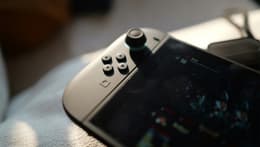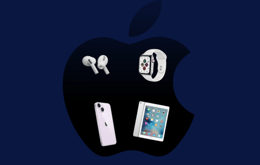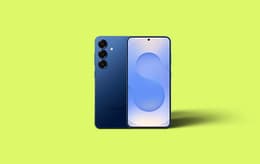
Gamers, are you thinking about purchasing the highly anticipated Nintendo Switch 2? Here’s what you need to know.
After years of feverish speculation and many false starts, the Nintendo Switch 2 is finally among us.
The Japanese gaming giant’s new $449.99 console has launched worldwide with the stellar Mario Kart World, where the cartoonish action feels less restrictive than previous iterations of this beloved racing series. You can even do power slides as a controversially redesigned Donkey Kong character model.
Yet, if you take away all the hype around this follow-up to the enormously successful Switch (which launched way back in 2017), then the Switch 2 isn’t quite the radical leap forward Reddit-dwelling Nintendo fans were hoping for. Not yet, anyway. To celebrate the launch of the Nintendo Switch 2, a device we’re sure to be stocking on Back Market in the future, we separate the fuss from reality, ultimately answering whether it’s worth cashing in.

Design and build
One of the first things you’ll notice about the Switch 2 is a bigger, sharper screen (a 7.9-inch LCD), which somehow remains thin and the same width (13.9mm) as its predecessor.
There are also two USB-C ports on the Switch 2; Joy-Con 2 controllers that attach to the console intuitively via magnet lock; and new features that allow for supposedly seamless audio/video chats during online multiplayer battles with friends.
The console itself is sleek-looking and doesn’t dominate your shelves, making it much more attractive than the weightier designs of rival Sony’s Robot Wars contestant-esque PlayStation 5 and Microsoft’s monolith-like Xbox Series X. The Switch 2 will fit in your pocket without a problem.
However, despite its bold black colors and sturdy feel, this console isn’t radically different from the Switch 1 in the looks department. This is jarring, considering Nintendo has historically been renowned for taking bold design leaps forward, no matter the commercial risk. (Compare the look of the N64 to the GameCube, for example.)
Could the fact that the average consumer won’t be able to notice a huge difference in design (for the console itself and also its samey box) make the masses less likely to upgrade to a Switch 2? Only time will tell.

Performance and features
The graphical capabilities (FYI: Switch 2 runs on an 8x ARM Cortex A78C architecture, which is double the size of the OG Switch) are noticeably stronger for the Switch 2, with experts claiming its specs are on par with a PlayStation 4 Pro. This is particularly impressive for a handheld console.
Despite not reaching true next-gen levels, the Switch 2 is designed to utilize the High Dynamic Range that comes along with 4K and 120Hz resolution televisions, meaning this is the crispest Mario has ever looked, and Kirby will have life-like fluff due to all consoles’ ray-tracing capabilities! This is all achieved thanks to an advanced Nvidia T239 chip.
The Switch 2 is fully compatible with all OG Switch games and offers upgraded versions (including Zelda: Breath of the Wild) that show their visuals in 2160p (on supported TVs). It’s fair to say Nintendo has always been driven far more by gameplay innovation than simply being the leader in offering flashy graphics, but it might annoy some to know the Switch 2 console isn’t close to PS5 levels, especially given its hefty price tag.
Disappointingly, a lot of third-party games on the Switch 2 can only be accessed once downloaded via a game-key card. This means your cartridge will be useless without an internet connection, an obvious barrier to some international players, and a sign Nintendo is moving more away from physical media.
User experience
The Switch 2 has already received multiple system updates right out of the box, which historically has been a sign that a console might not have been 100% ready for sale. This might mean it’s worth waiting a few months until all Switch 2 teething issues have been totally ironed out by Nintendo.
There have also been viral online reviews stating the new Joy-Con controllers remain too uncomfortable to use for long periods of time, making a costly upgrade to a more conventional (and separately sold) $84.99 Pro-Switch 2 controller inevitable.
Meanwhile, on Reddit, some users have complained of lag while doing Mario Kart battles online. This is blamed on bottlenecking restrictions enforced by Nintendo, which keeps Switch 2 download speeds down to 400 Mbps. No one can argue with the pricing around Nintendo Switch Online, however, which is priced at a reasonable and much-appreciated $19.99.
Conclusion
The Switch 2 feels more like a refinement of Nintendo’s iconic 2017 handheld console than a bold new dawn. While Nintendo die-hards and graphical connoisseurs will welcome the improved performance, it likely will be a few years until Nintendo are fully making use of this new hardware. In the past, Nintendo has also put out upgraded Switch variations and it’s likely Switch 2 will be no different, which is another reason perhaps to delay purchasing.
The launch titles on Switch 2 are also a little disappointing, with far too many re-releases of Switch games and the likes of Donkey Kong Bananza not due until next month (July 2025). It might take at least a year for the Switch 2 to feel like it has a substantial games library, by which time Mario Kart World will surely have outstayed its welcome.
If you love new gadgets and would be prepared to follow Nintendo just about anywhere (guilty), then the Switch 2 is well worth getting. But for casuals and more fringe Nintendo players, purchasing a refurbished Switch from Back Market remains the best option, with this popular console still running like a champ and filled with hundreds of killer titles ready to play right now!
Creating more e-waste and draining your bank account just isn’t worth it for a device that isn’t radically different from its predecessor. Once Nintendo adds more innovative titles, pushes the Switch 2 hardware a little further, and hopefully lowers the price a little, we would 100% support a purchase. But until then, maybe hold off and exercise some restraint.





